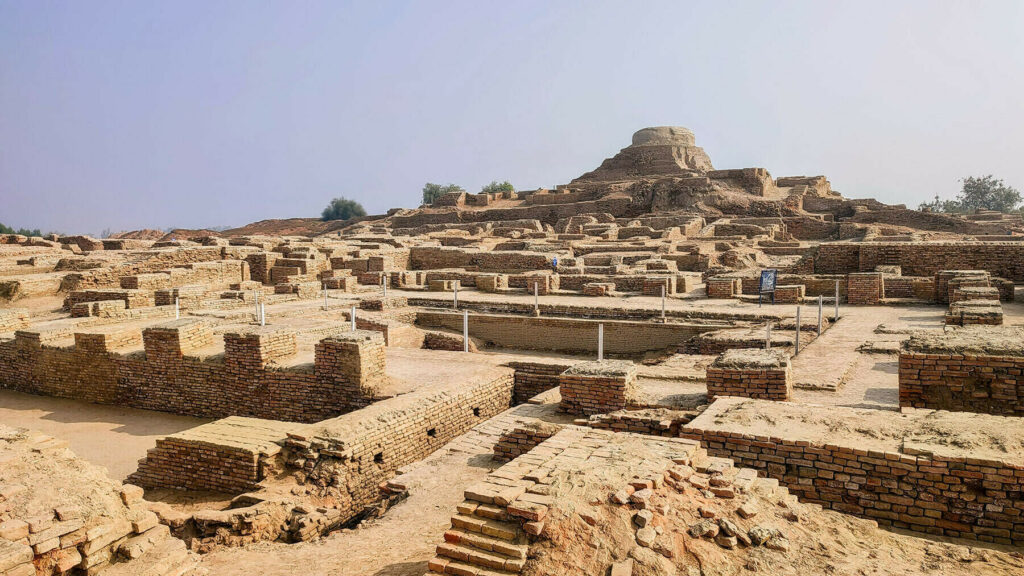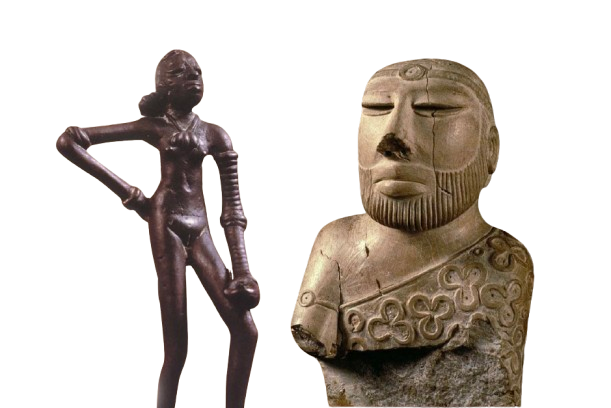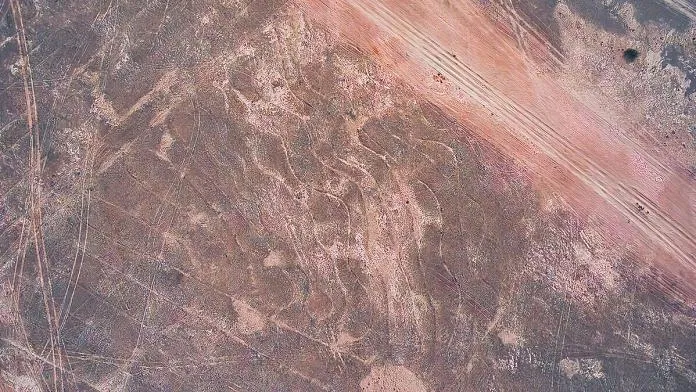Mohenjo-daro: Unearthing the Heart of the Indus Valley Civilization
Introduction
Mohenjo-daro, located in modern-day Sindh, Pakistan, stands as one of the most significant archaeological discoveries of the 20th century. Built around 2500 BCE, this ancient city was a major urban center of the Indus Valley Civilization (IVC), which flourished alongside civilizations in Egypt and Mesopotamia. The excavation of Mohenjo-daro revealed a society with advanced urban planning, complex infrastructure, and a rich cultural history. Its rediscovery has provided historians and archaeologists with key insights into one of the world’s earliest urban settlements.
The Discovery and Early Excavations
In 1922, R.D. Banerji, an officer with the Archaeological Survey of India (ASI), identified Mohenjo-daro as a significant archaeological site. Under the supervision of Sir John Marshall, excavations began shortly afterward. Marshall, then Director-General of the ASI, helped bring international attention to the site. Later, prominent archaeologists like Sir Mortimer Wheeler and Ernest Mackay led additional excavations in the 1930s and 1940s.
The discoveries at Mohenjo-daro expanded our understanding of the Indus Valley Civilization’s reach and sophistication. The city was much larger than previously imagined, covering an area of approximately 300 hectares, and showcased intricate town planning and engineering marvels that were far ahead of their time.
Advanced Urban Planning and Architecture
Mohenjo-daro is renowned for its well-organized layout, which reflected the advanced urban planning of the Harappans. The city was divided into two main areas: the Citadel and the Lower Town. The Citadel, raised on an artificial platform, housed important public buildings, including the Great Bath, an impressive brick structure that may have been used for ritual purification. The Lower Town was a grid of streets lined with homes, workshops, and markets, illustrating a well-ordered society.
A standout feature of Mohenjo-daro is its drainage system. Streets were equipped with underground sewage systems that connected individual houses to the city’s main drains. This emphasis on public sanitation shows the Harappans’ advanced understanding of hygiene and urban infrastructure. Homes in Mohenjo-daro were built from standardized bricks and often had courtyards, wells, and private baths, indicating the importance of water in daily life.
Significant Discoveries from Excavations
The following table summarizes key artifacts and materials discovered at Mohenjo-daro, offering a glimpse into the city’s cultural and economic life:
| Excavated Material | Details |
|---|---|
| Pottery | Harappan pottery, often decorated with geometric and animal motifs, used for storage and cooking. |
| Seals | Thousands of steatite seals with inscriptions and symbols, likely used for trade and identification. |
| Terracotta Figurines | Small figurines of animals, humans, and deities, indicating artistic expression and possibly religious beliefs. |
| Copper and Bronze Tools | Tools such as knives, axes, and chisels, demonstrating the Harappans’ metalworking skills. |
| Beads and Jewelry | Crafted from carnelian, lapis lazuli, and gold, indicating a robust trade network with distant regions. |
| Weights and Measures | Standardized weights made from stone, used for trade and commerce across the region. |
| The Great Bath | A large, water-tight brick structure believed to be used for ritual purification, reflecting the cultural significance of water. |
These findings reveal the Harappans’ technical skills and their engagement in trade, both within the Indus region and beyond. The numerous seals, adorned with animals and symbols, are believed to have been used for commercial purposes and possibly carried proto-writing, offering clues about the Harappans’ economic systems.
The Mystery of Mohenjo-daro’s Decline
Despite its prominence, Mohenjo-daro was abandoned around 1900 BCE. The exact cause of its decline remains a mystery, but scholars have proposed several theories. Environmental changes, such as shifts in the course of the Indus River or recurring floods, may have disrupted the city’s infrastructure and water supply. Additionally, some scholars suggest that overuse of resources, such as deforestation and soil degradation, could have contributed to its collapse.
Unlike other ancient cities, there is no clear evidence of warfare or invasion in Mohenjo-daro, leading many to believe that the city’s decline was gradual rather than catastrophic. The absence of defensive walls and the lack of significant weapons further support this theory. However, the true reason behind the city’s abandonment continues to puzzle archaeologists.
Preservation Efforts and Ongoing Challenges
Mohenjo-daro faces significant preservation challenges today. Rising groundwater and salinity have been eroding the ancient brick structures, posing a threat to the site’s long-term survival. In 1980, UNESCO designated Mohenjo-daro as a World Heritage Site, which helped bring international attention to the preservation efforts. Both Pakistani authorities and global organizations have since worked to protect the site, though much of it remains unexcavated.
Environmental issues, combined with a lack of resources and funding for sustained archaeological work, mean that much of Mohenjo-daro’s history is still buried beneath the earth. Nevertheless, ongoing conservation efforts are critical to preserving this invaluable piece of human history.
Conclusion
The excavation of Mohenjo-daro has opened a window into the world of the Indus Valley Civilization, revealing an ancient society with remarkable achievements in urban planning, trade, and culture. The city’s well-planned streets, sophisticated drainage systems, and artistic expressions provide a glimpse into a civilization that thrived over 4,000 years ago. While many questions remain about its eventual decline, Mohenjo-daro remains a vital source of knowledge about early human urbanization and continues to be a focus of archaeological research and preservation efforts.
Future excavations may unearth more of the city’s secrets, offering deeper insights into the lives of the people who once called Mohenjo-daro home.



